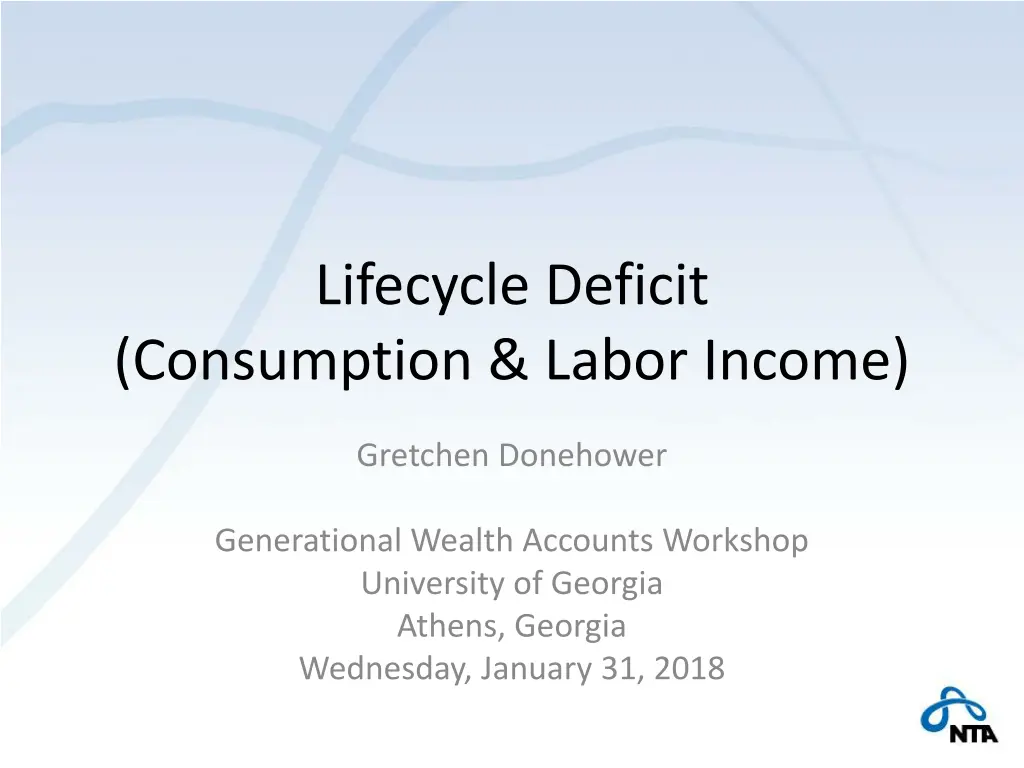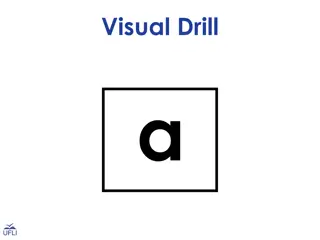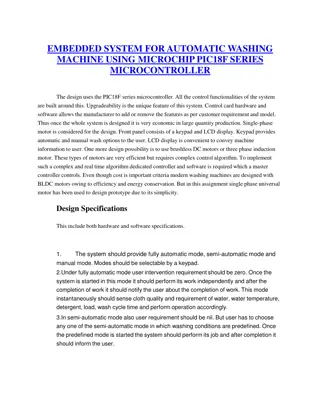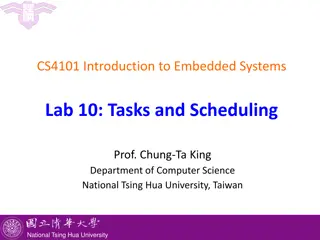
Private Consumption Allocation Methods and Challenges Explained
Explore the detailed process of allocating private consumption, including education and health care, through various methods such as the Engel method and National Health Accounts. Learn about the complexities and sources of financing involved in private health care consumption. Gain insights into the challenges faced in accurately estimating private capital consumption.
Download Presentation

Please find below an Image/Link to download the presentation.
The content on the website is provided AS IS for your information and personal use only. It may not be sold, licensed, or shared on other websites without obtaining consent from the author. If you encounter any issues during the download, it is possible that the publisher has removed the file from their server.
You are allowed to download the files provided on this website for personal or commercial use, subject to the condition that they are used lawfully. All files are the property of their respective owners.
The content on the website is provided AS IS for your information and personal use only. It may not be sold, licensed, or shared on other websites without obtaining consent from the author.
E N D
Presentation Transcript
Lifecycle Deficit (Consumption & Labor Income) Gretchen Donehower Generational Wealth Accounts Workshop University of Georgia Athens, Georgia Wednesday, January 31, 2018
Most of this presentation copied from old slides of Sang-Hyop Lee, University of Hawaii at Manoa, so thank you, Sang- Hyop! 2
The Economic Lifecycle (per capita) Consumption and Labor Income, Per Capita 1.200 1.000 Labor Income 0.800 Consumption 0.600 0.400 0.200 0.000 0 10 20 30 40 50 60 70 80 90+ Age Note. Values normalized on per capita labor income of persons 30-49. 3
Private Consumption Standard approach of allocating household consumption among the members did not provide reasonable results Engel method: food share is used to measure households well-being Rothbarth method: welfare measured by expenditure on adult goods per adult Alternative method (NTA) Estimate education and health consumption directly with utilization measures, and administrative data Estimate private capital consumption (rental value of owner occupied housing + flow of services from durables) Well we would like to have flow of services of durables, but in practice many countries do not have sufficient data to calculate this as a separate age profile, so it gets mixed in with other Allocate other consumption indirectly (using Equivalence Scale) 4
Allocating Private Education Consumption ( ) a E a = + ( ) a NE a edu j ( ) ( ) C j j Private education consumption is regressed on the number of enrolled (E) and non- enrolled (NE) in each age group. The age groups included will vary with the country and its enrollment rates. Use unsmoothed profile. 5
Allocating Private Health Care Consumption Often very complex in part due to various source of financing, which includes Private out-of-pocket expense Private insurance Public sector Available sources of data vary across countries. National Health Accounts (NHA) can be helpful, but there are differences between NHA and NTA E.g. NHA document expenditures rather than consumption. Thus it includes profits of insurance companies. Estimate using one of four approaches. 6
Approach 1: Method based on individual utilization measures from expenditure survey data ( ) a IN = + ( ) a OUT health j ( ) a ( ) a C j j Private health consumption is regressed on the number of members using inpatient services (IN) and outpatient services (OUT) in each age group. 7
Approach 2: Based on age profile of per capita utilization measures = ( ) a U a M health j ( ) ( ) a C j = U a M + aU a M health j ( ) ( ) a ( ) ( ) a C 0 1 j j + 2 ( ) ( ) a a U a M 2 j Private health consumption is regressed on the number of members (M) and per capita utilization measure by age (U) Could be linear (the former) or non-linear (the latter) 8
Approach 3: Based on non-parametric iterative method Assign health expenditure equally to each household member and then tabulate the per capita profile. The per capita profile is then used as weights to allocate health expenditure to household members producing a new per capita profile. Repeat until the weights do not change much. Unlike regression approach, it does not produce negative coefficients for some age groups.
Estimated C after iteration Age True C 1 2 3 4 5 6 5 10 14.44 11.90 10.83 10.36 10.16 10.07 35 30 25.00 27.42 28.74 29.40 29.72 29.87 65 20 22.22 21.54 20.85 20.43 20.21 20.10 HH No Id No Age HH C 1 2 3 4 5 6 1 1 5 70 23.33 15.69 12.48 11.09 10.49 10.22 1 2 35 70 23.33 27.16 28.76 29.45 29.76 29.89 1 3 35 70 23.33 27.16 28.76 29.45 29.76 29.89 2 1 35 80 26.67 27.69 28.72 29.35 29.69 29.85 2 2 35 80 26.67 27.69 28.72 29.35 29.69 29.85 2 3 65 80 26.67 24.62 22.56 21.30 20.63 20.30 3 1 65 40 20 20.00 20.00 20.00 20.00 20.00 3 2 65 40 20 20.00 20.00 20.00 20.00 20.00 4 1 5 20 10 10.00 10.00 10.00 10.00 10.00 4 2 5 20 10 10.00 10.00 10.00 10.00 10.00 10
Approach 4: Based on simple regression = ( ) a M health j ( ) a C j Private health consumption is regressed on the number of household members (M). Could have negative coefficients replace with zero. The least recommended approach.
Estimating Other Household Consumption = = ( ) 1 0.6 (for ( ) 1 [0.6*(20 ( ) 1 (otherwise, i.e., a = 4) )]/16 (for 4< <20) 20) a a a a a a Assumed to be proportional to an equivalence scale that is equal to 1 for adults aged twenty or older, declines linearly from age 20 to 0.4 at age 4, and is constant at 0.4 for those age 4 or younger. 12
Public Consumption Allocated based on administrative records, and in some cases, survey data. Public education consumption Formal education consumption: estimate by calculating unit cost per student per level. Informal education consumption: estimate by dividing total public informal education consumption by total population by age. Public health care consumption Health care purchased by individuals and reimbursed through public programs: captured in household surveys. Health care provided directly to individuals by government clinics: allocate using administrative records. Collective health services: allocate on a per capita basis. Other public consumption: equally to all members
Consumption Profiles: Industrialized vs. Developing Countries. 1.200 More on elderly (health care) US 1.000 More on education 0.800 C(a)/Yl(30-49) Japan 0.600 0.400 Range for developing countries 0.200 0.000 0 10 20 30 40 50 60 70 80 90+
Estimating Labor Income Labor income includes The compensation of employees . Wages and salaries . Fringe benefits . Deferred payments Labor s estimated share of mixed income (self-employment income) Does not include in-home activities which does not produce market goods or services (e.g. childrearing) We ll talk about that tomorrow with National Time Transfer Accounts
Imputing Labor Income for Unpaid Family Workers Estimate using the age profile of earnings of employees as a share to allocate household self- employment income to self-employed workers including unpaid family workers. Example: Two-third of this household s self-employment income equals 30. Then, Age Earnings per employee Imputed 18 (unpaid) 200 10 44 (self emp.) 400 20 16
Per Capita Private Income, Mexico, 2004 YL Old YL Imputed unincorp_old unincorp_imp earnings benefits 90,000 80,000 70,000 Mexican Pesos 60,000 50,000 40,000 30,000 20,000 10,000 0 0 5 10 15 20 25 30 35 40 45 50 55 60 65 70 75 80 85 90+ Age
Primary Target: Countries with Large Share of Self-Employment Income (per capita) Philippines (1999) Kenya (1999) 1.2 1.2 1 1 0.8 0.8 50.0% Self employment income 61.4% Earnings 0.6 0.6 0.4 0.4 0.2 0.2 0 0 Age Indonesia (1999) 1.2 32.9% 1 0.8 0.6 0.4 0.2 0
Secondary Target: Countries with Moderate Share of Self-Employment Income South Korea (2000) Japan 1.2 1.4 1.2 1 19.7% 22.8% 1 0.8 0.8 0.6 0.6 0.4 0.4 0.2 0.2 0 0 Taiwan (2003) Chile 1.2 1.2 1 1 17.8% 18.0% 0.8 0.8 0.6 0.6 0.4 0.4 0.2 0.2 0 0
Per Capita Labor Income Profile Chile (1997) Costa Rica (2004) Finland (2004) France (2001) India (1999/2000) Indonesia (1999) Japan (2004) Kenya (1994) Mexico (2005) Philippines (1999) Slovenia (2004) S.Korea (2000) Sweden (2003) Taiwan (2003) Thailand (2004) Uruguay (1994) 1.4 Relative to mean labor 1.2 income of 30-49 1 0.8 0.6 0.4 0.2 0 0 7 14 21 28 35 42 49 56 63 70 77 84 Age
Labor Income: Industrialized vs. Developing Countries. 1.4 Japan 1.2 Higher Yl in the 50-59 age group 1 Developing 0.8 US 0.6 0.4 0.2 0 0 10 20 30 40 50 60 70 80 90+
Aggregate Controls Adjust the aggregate profile and the per capita profile to match a control total taken from NIPA or some other source. Private consumption: household final consumption expenditure + non-profit institutions serving households (NPISHs) final consumption expenditure Public consumption: general government final consumption expenditure Earnings + fringe benefits: compensation of employees. NIPA excludes compensation received by non-resident and remittances (on-going discussion) Labor portion of self-employment income: mixed income of household sector
Details of Aggregate Controls In NIPA, prices are market prices; in NTA, prices are basic prices net of indirect taxes In NIPA, private health consumption reimbursed through public health insurance programs (Medicare, NHI) are private health consumption; in NTA it is reclassified as public consumption. In NIPA, non-housing consumer durable consumption is measured by expenditure; in NTA, consumption of it is the flow of services This is mostly theoretical, though, as most countries do not have the data to estimate this completely
Lab exercise Work through calculating a few age profiles Example is using old US data (sorry!) You can use the provided example data, or try to use your own and modify the code as necessary






















